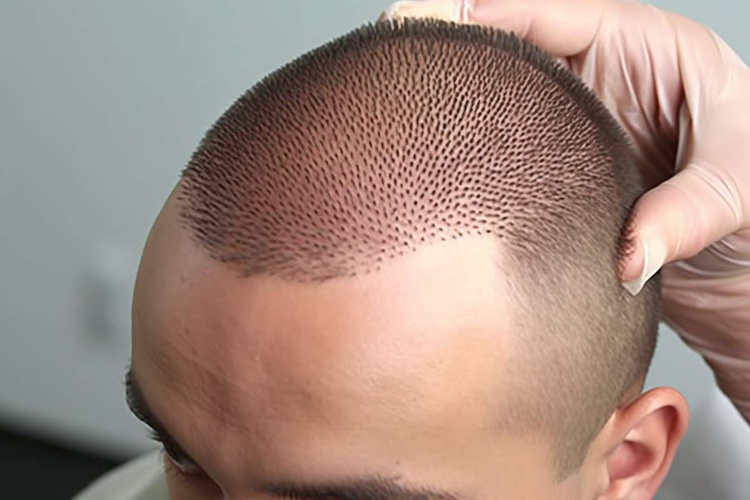Understanding Hairline Restoration: Methods, Expectations, and Considerations
Hairline restoration has become a widely discussed topic among individuals exploring ways to address thinning or receding hair. Modern techniques focus on natural-looking outcomes and gradual improvement through medically supervised or non-surgical approaches. This guide explains how hairline restoration works, the common methods used, and what factors to consider before beginning any form of treatment or care plan.

Hair loss affects millions of people worldwide, with hairline recession being one of the most common and noticeable forms. Modern medical advances have developed various restoration techniques that can help restore both hair density and confidence. The field of hair restoration has evolved significantly, offering solutions ranging from minimally invasive procedures to comprehensive surgical interventions.
What Hairline Restoration Involves
Hairline restoration encompasses various medical and cosmetic procedures designed to address hair loss, particularly in the frontal area of the scalp. The process typically begins with a thorough consultation where specialists assess the extent of hair loss, examine hair quality, and determine the most suitable treatment approach. During this evaluation, factors such as age, hair loss pattern, donor hair availability, and patient expectations are carefully considered. The restoration process may involve redistributing existing hair follicles, stimulating dormant follicles, or creating entirely new hairlines through surgical intervention. Most procedures require multiple sessions and follow-up appointments to achieve optimal results.
Common Approaches and Techniques
Several established techniques are available for hairline restoration, each with distinct advantages and applications. Follicular Unit Transplantation (FUT) involves removing a strip of scalp from the donor area and extracting individual follicular units for transplantation. Follicular Unit Extraction (FUE) uses a punch tool to harvest individual follicles directly from the donor area, leaving minimal scarring. Direct Hair Implantation (DHI) represents a refined version of FUE, where follicles are implanted immediately after extraction using specialized tools. Non-surgical options include platelet-rich plasma therapy, which uses the patient’s own blood components to stimulate hair growth, and low-level laser therapy that aims to improve follicle health through light exposure.
Factors That Influence Treatment Choice
Selecting the appropriate restoration method depends on numerous individual factors that must be carefully evaluated. The extent and pattern of hair loss significantly influence treatment selection, as different techniques work better for specific loss patterns. Age plays a crucial role, with younger patients often requiring different approaches than older individuals due to progressive hair loss concerns. Donor hair quality and quantity determine the feasibility of transplantation procedures and expected coverage outcomes. Lifestyle factors, including occupation, physical activity levels, and maintenance preferences, also impact treatment choice. Medical history, scalp condition, and healing capacity affect both procedure selection and recovery expectations. Financial considerations and time availability for multiple sessions are practical factors that influence decision-making.
Expected Results and Recovery Time
Recovery timelines and result expectations vary significantly depending on the chosen restoration method and individual healing characteristics. Surgical procedures typically require an initial healing period of 7-14 days, during which patients may experience swelling, redness, and temporary scabbing around treated areas. The transplanted hair usually falls out within 2-4 weeks post-procedure, which is a normal part of the process called shock loss. New hair growth typically begins around 3-4 months after treatment, with significant improvement visible by 6-9 months. Full results are generally achieved within 12-18 months, though some patients may continue seeing improvements for up to two years. Non-surgical treatments often require longer timeframes to show results, with improvements becoming noticeable after 3-6 months of consistent treatment.
| Treatment Type | Provider Examples | Cost Estimation | Recovery Time |
|---|---|---|---|
| FUE Procedure | Bosley, Hair Club, ISHRS Members | $4,000-$15,000 | 7-14 days initial |
| FUT Procedure | Bernstein Medical, NeoGraft Centers | $3,000-$12,000 | 10-21 days initial |
| PRP Therapy | Dermatology clinics, Hair restoration centers | $500-$2,000 per session | 1-2 days |
| Laser Therapy | HairMax, iRestore, Capillus | $200-$3,000 (device) | No downtime |
Prices, rates, or cost estimates mentioned in this article are based on the latest available information but may change over time. Independent research is advised before making financial decisions.
Success rates for hairline restoration procedures are generally high when performed by qualified specialists, with most patients achieving satisfactory results. However, realistic expectations are crucial for patient satisfaction. Factors such as hair texture, color, and growth patterns influence the final aesthetic outcome. Some patients may require additional sessions to achieve desired density or coverage. Maintenance treatments or medications might be necessary to preserve results and prevent further hair loss in untreated areas. Long-term care often includes specialized shampoos, gentle styling practices, and regular follow-up appointments to monitor progress and address any concerns that may arise during the healing and growth phases.




